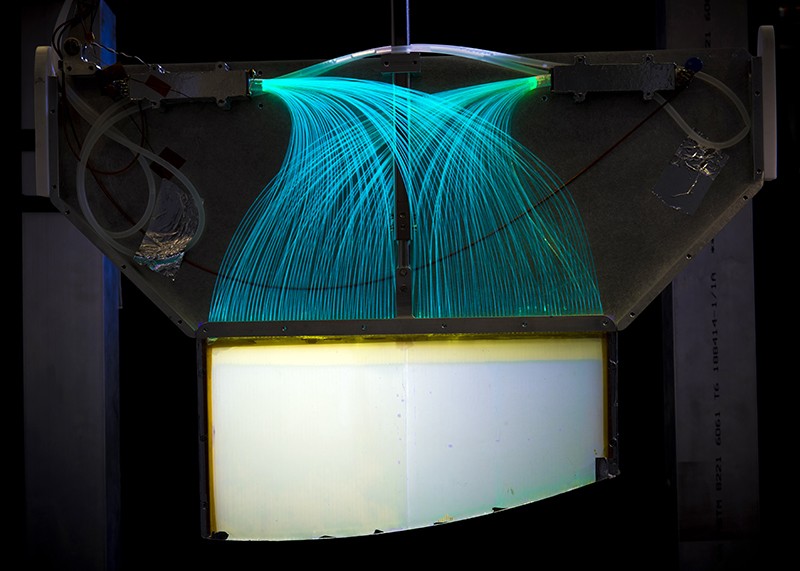Denver, Colorado
Physicists are drawing closer to answering a long-standing mystery of the Universe: how long a neutron lives.
Neutrons are electrically neutral particles that usually combine with protons to make up atomic nuclei. Some neutrons are not bound up in atoms; these free-floating neutrons decay radioactively into other particles in a matter of minutes.
But physicists can’t agree on precisely how long it takes a neutron to die. Using one laboratory approach, they measure the average neutron lifetime as 14 minutes 39 seconds. Using a different approach, they get 8 seconds longer. The discrepancy has bedevilled researchers for nearly 15 years.
“We don’t know why they’re different,” says Shannon Hoogerheide, a physicist at the National Institute of Standards and Technology (NIST) in Gaithersburg, Maryland. “We really need to understand and eliminate this discrepancy.” She and other scientists debated new ways to solve the problem on 13 and 14 April at a meeting of the American Physical Society in Denver, Colorado.
Pinpointing the lifetime of a neutron is important for understanding how much hydrogen, helium and other light elements formed in the first few minutes after the Universe was born in the Big Bang, 13.8 billion years ago. Scientists also think they can hunt for new types of physics if they can better pin down the neutron’s lifetime, because that would help to constrain measurements of other subatomic particles.
Subatomic clock
James Chadwick discovered the neutron in 1932, but it wasn’t until 1951 that researchers first reported measuring the particle’s lifetime, using nuclear reactors that manufactured free neutrons and tracked how they decayed. Physicists kept working their way closer to the answer — until 2005, when their measurements became precise enough to reveal the puzzling eight-second difference. Then scientists got worried.
One way of clocking the neutron’s lifetime is to put some of the particles in a bottle and count how many are left after a period of time. This ‘bottle’ method has been tried at several laboratories, including the Los Alamos National Laboratory in New Mexico1 and the Institut Laue–Langevin (ILL) in Grenoble, France2,3. On average, they come up with a neutron lifetime of 14 minutes 39 seconds.
The other way is to feed neutrons into a detector that counts the protons created as the neutrons decay. This ‘beam’ method has been used at NIST and the Japan Proton Accelerator Research Complex in Tokai. The Japanese work has just got under way, but the NIST collaboration reported in 2013 that their neutrons live eight seconds longer, on average, than seen in the bottle method4.
That’s a big problem, because the beam and bottle measurements are each so precise that they don’t overlap, even when their margins of error are taken into account. So physicists have been looking for ways to explain why neutrons might be disappearing from bottles faster than from beams.
Quantum weirdness
One possibility is that one of the two methods is doing something wrong. In that case, researchers might want to combine beam and bottle in a single device. At the meeting, physicist Zhaowen Tang of the Los Alamos lab described how researchers could put a particle detector inside a bottle neutron trap and count neutrons using both methods. His team has acquired funding to start building the device.
Another possibility is that the beam and bottle approaches have been measuring the neutron lifetime correctly, but that some unseen factor accounts for the discrepancy between the two. A leading idea is that neutrons might occasionally decay into not just protons but also dark matter, the mysterious unseen material that makes up much of the Universe’s matter.
“It would be amazing if the good old neutron turns out to be the particle that opens the gates of the dark sector for us,” says Bartosz Fornal, a theoretical physicist at the University of California, San Diego, who helped to propose the idea last year5. But so far, experimentalists haven’t been able to confirm whether this might be happening, several teams reported at the Denver meeting.
In the meantime, the NIST beam experiment has been gathering fresh data since last year, using sensitive detectors and other components that will make it more precise than previous runs — measuring the neutron lifetime to within one second rather than three to four seconds as has happened so far. “Everybody’s waiting for the results from that,” says Nadia Fomin, a physicist at the University of Tennessee in Knoxville. And the team is already designing its next-generation experiment, which aims to nail the neutron lifetime within 0.3 seconds.
“We’re on the way to pinning this down,” says Peter Geltenbort, a physicist at the ILL.
Sign up for the daily Nature Briefing email newsletter
Stay up to date with what matters in science and why, handpicked from Nature and other publications worldwide.

